Quick Summary:
- Squats and hip thrusts both lead to improvements in squat strength, hip thrust strength, horizontal pushing force, and upper and lower gluteus maximus hypertrophy
- Squats are better suited at increasing squat strength, at least in this experiment
- Hip thrusts are better suited at increasing hip thrust strength, maximum horizontal pushing force, and upper and lower gluteus maximus hypertrophy, at least in this experiment
- Squats grew the upper glutes by 20% and lower glutes by 21% over the 6-week period
- Hip thrusts grew the upper glutes by 28% and lower glutes by 28% over the 6-week period
- Squats increased maximum horizontal pushing force by 20%, hip thrusts increased maximum horizontal pushing force by 32%.
- A randomized controlled trial with ample subjects is needed to expand upon these findings
Hi Fitness Friends! This is part II of a 5-part series on squats versus hip thrusts. The data from this series comes from my doctoral thesis, which should hopefully be posted online for anyone to read next year (assuming I pass my defense in December…wouldn’t it be hilarious if I hyped this up and then failed my defense and PhD?). Parts I and III will look at mechanistic data, namely what happens when you perform the two exercises while wearing electrodes or while on top of a force plate. Parts II and IV will look at what actually happens following a 6-week training protocol. Part V will summarize the findings and point out limitations and directions for future research. I posted part I last week, this article is part II, and I’ll post parts III-V over the next couple of weeks.
- Squats Versus Hip Thrusts Part I: EMG Activity
- Squats Versus Hip Thrusts Part II: The Twin Experiment
- Squats Versus Hip Thrusts Part III: Forcetime Data
- Squats Versus Hip Thrusts Part IV: Training Effects
- Squats Versus Hip Thrusts Part V: Wrap-Up
As many of you know, I recently trained a pair of identical twin sisters three times per week for 6 weeks using a daily undulated (DUP) approach, with one performing only squats for lower body and the other performing only hip thrusts. It was cool to attain a pair of identical twins since the genetics of strength and hypertrophy gains is huge (see HERE for an intriguing write-up from yours truly from 4 yrs ago). The twins have been exercising regularly for 12 years (randomly, their dad is actually the inventor of Powerblock dumbbells!), but they’d never progressively trained the squat or the hip thrust. The 6-week program led to incredible gains in strength, glute mass, and function, and I’m excited to share the results with you below.
Force Vector Theory
First, let me set the stage. In 2009-2010, I created a theoretical model pertaining to transfer of strength training to performance that related to the force vector. Of course, there are many more factors to consider with regards to transfer of training, but I surmised that the force vector played a huge role in determining the nature of transfer to sport action and functional performance. HERE is the article I wrote on my blog six years ago, but I’d prefer that you click on THIS link as I updated the article for the NSCA’s website last year.
The model was accepted and applauded by many S&C professionals and scoffed and ridiculed by others. Even now, there isn’t much previous research to go by as the published studies examining the transfer of horizontal to vertical exercise and vice versa mainly used plyometric and not strength exercises. There are plenty of correlational studies to go by, but correlation does not imply causation.
Horizontal Force Test
While this “Force Vector Theory” is sexy and intriguing, it was purely theoretical. There were no experiments that had been conducted to test the model’s validity. While there are numerous tests of vertical strength that have been previously used in sports science, for example the 1RM squat, 1RM deadlift, isometric squat, and isometric mid-thigh pull, there isn’t a single horizontal force test used previously in the literature. That is, until now.
I came up with the idea of a maximum horizontal push test during my last week in New Zealand several years back, and it’s such an obvious effective test in my opinion; it should be used frequently in future research to come. To perform the test, you simply stand on a force plate with your arms parallel to the ground and your torso at a 45 degree angle and push into the wall as hard as possible for 3-seconds while standing on the dominant limb. Maximum horizontal force is recorded over 3 trials, and you record the average peak force of the 3 trials. I put grip tape on the force plate and set it on a rubber mat to ensure that no slipping or sliding occurs. We tested the reliability of this test and it’s very reliable. This will be published in time.

The Maximum Horizontal Push Test: a very reliable test for measuring maximum horizontal force production
The Training
Three times per week, the twins performed 3-5 sets of 6-15 reps of their individual lift (hip thrusts or parallel back squats). Day one was 4 x 10 (with around 75% of 1RM), day two was 5 x 6 (with around 85% of 1RM), and day three was 3 x 15 (with around 65% of 1RM). However, if the subject could perform more reps on the last set, she did (so the last set was an AMRAP set which stands for “as many reps as possible”).
After their lower body lift, the twins performed 2 sets of either incline press, bench press, or close grip bench press, then 2 sets of either inverted rows, lat pulldowns, or negative chin ups, then 2 sets of either ab mat crunches, straight leg sit ups, or hanging leg raises.
Loads were increased each week. It should be pointed out that the twins’ weight didn’t change much throughout the study and they were instructed to follow identical caloric and macronutrient plans throughout the 6 weeks.
The Results (and Some Observations)
Squatting or hip thrusting 18 times over a 6 week period in a DUP fashion elicited the following results:
Early on in the study, I realized that the time under tension (TUT) in the squat was way higher than the hip thrust. The twin performing squats was taking much longer to complete her sets (due to the greater ROM and slower eccentric phase) than the twin performing hip thrusts. Conversely, the volume load (VL) in the hip thrust was way higher than the squat. The twin performing hip thrusts used much heavier loads and did more reps (due to the AMRAP sets) than the twin performing squats.
I calculated the time under tension and the volume loads for the entire 6-week period (18 sessions). Squat TUT was 2,964 seconds whereas hip thrust TUT was 1,386 seconds. Squat VL was 25,143 kgs whereas hip thrust VL was 58,978 kgs. Interestingly, when multiplying the TUT by VL (I suppose this is slightly similar to impulse, but not quite the same), the two protocols yielded similar data (squat 75,000,000 kg*s and hip thrust 82,000,000 kg*s). These data don’t completely jibe with our force plate findings that you’ll read about in part III, so it can’t be said that everyone experiences these same results. However, it probably applies well to taller, lankier individuals.
As per the law of specificity, the squat improves the squat better than the hip thrust and the hip thrust improves the hip thrust better than the squat. However, with these twins, the hip thrust built the squat to a better degree than the squat built the hip thrust. This doesn’t hold true in a bigger group, as you’ll see in Part IV of this series that the two lifts transfer pretty equally to one another.
What fascinated me is that the twin that performed hip thrusts didn’t perform a single squat during the six weeks. She never even performed a bodyweight squat during her general warm-up. Her 1RM at the beginning of the test was 95 lbs, but at the end of the six week hip thrusting protocol, she could squat 135 lbs with better form. It just looked cleaner and smoother. Conversely, the twin that performed squats didn’t improve her hip thrust form much…in fact she seemed to get worse at the hip thrust in that she didn’t want to lock out the load and achieve full hip extension. It’s important to note that this is just a single subject design involving two subjects; it’s not a randomized controlled trial (RCT) with a sufficient sample size.
The squat twin started out squatting 95 lbs and hip thrusting 225 lbs and ended up squatting 155 lbs (60 lb improvement) and hip thrusting 265 lbs (40 lb improvement). The hip thrust twin started out squatting 95 lbs and hip thrusting 195 lbs and ended up squatting 135 lbs (40 lb improvement) and hip thrusting 315 lbs (125 lb improvement).
Based on this experiment, it appears that the hip thrust is better suited for improving maximum horizontal pushing force than the squat. The squat twin started off exerting 309 Newtons of horizontal force into the wall and ended up with 370 Newtons. The hip thrust twin started off exerting 320 Newtons of horizontal force into the wall and ended up with 422 Newtons. These were calculated 3 times on 3 separate days so they’re definitely legit.
Interestingly and anecdotally, I’ve always noticed that I can generate a ton of horizontal force even though my squat sucks. In high school football, I was very good at slamming into opponents and pushing them forward, and I had the weakest squat in the history of mankind. When my interns Andrew Serrano and Joey Percia were with me, we did a horizontal force test and I could outperform both of them, but their vertical force production was much higher than mine as they could probably perform 10 reps with my 1RM squat. I can out hip thrust them, so this jibes with the twin findings. A comprehensive RCT is needed to test the hypothesis that hip thrusts are better suited than squats at improving the maximum horizontal push test.
During the 6 weeks, the hip thrust twin kept talking about how she could feel her entire glutes getting bigger and rounder, however the squat twin would remark that she could feel her lower glutes getting more muscular. I believed that the ultrasound findings would mimic the EMG findings in that hip thrusts would grow the entire glutes whereas squats would preferentially grow the lower glutes, but this wasn’t the case. Based on this experiment, the hip thrust appears to be better at building the glutes than the squat, but the squat is still highly effective at packing on glute mass. And interestingly, the squat still builds upper glute mass even though it doesn’t lead to high levels of activation. An RCT with sufficient sample size is clearly needed to expand upon these findings.
As a personal trainer, I can attest that these twins are fast responders with regards to glute gains, and their muscle thickness results are very impressive compared to those of other muscles in other studies, however there are a couple of studies that show similar gains in muscle thickness in a 6 week period (but it didn’t examine the glutes). Surprisingly, this is the very first experiment that has examined gluteus maximus hypertrophy in the barbell squat and in the barbell hip thrust. Let’s get with the program sports science researchers!!!
Conclusion
This experiment lends support to the force vector transfer of training theory. It will hopefully be published in time so you can examine a full report of the methods.
Stay tuned over the next couple of weeks to learn how squats compare to hip thrusts in forcetime data (barbell displacement, set duration, force, work, impulse, and power) and in transfer to training (vertical and horizontal jump, 10 and 20m acceleration, 3RM front squat and hip thrust, and maximum isometric mid-thigh pull).

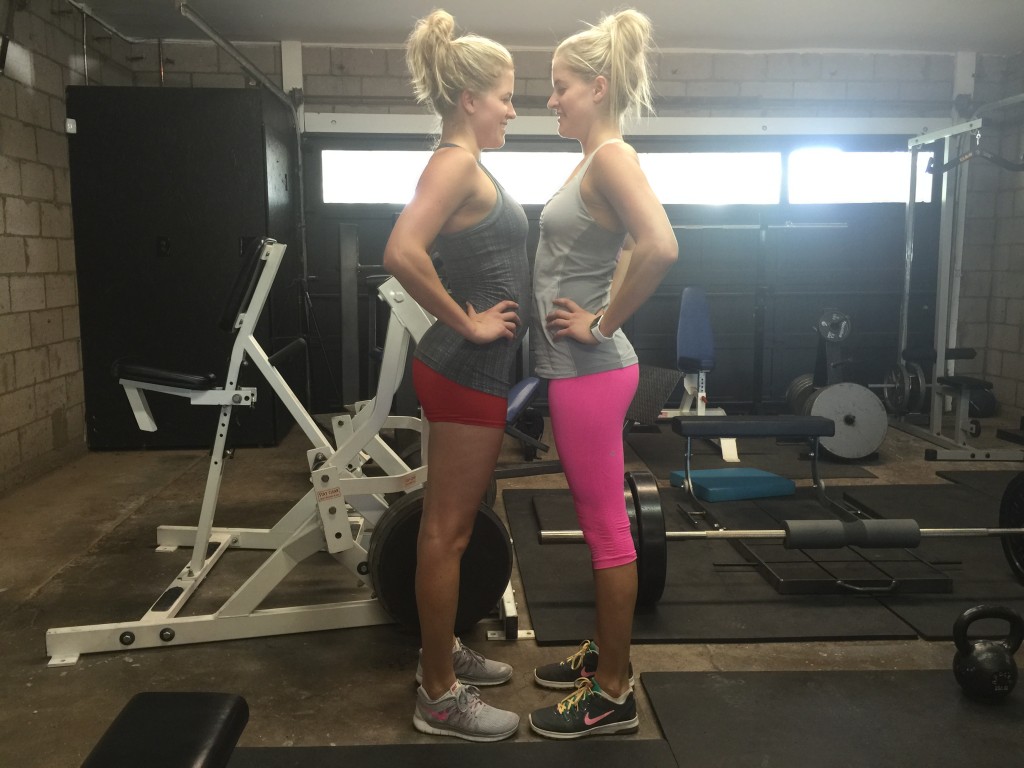
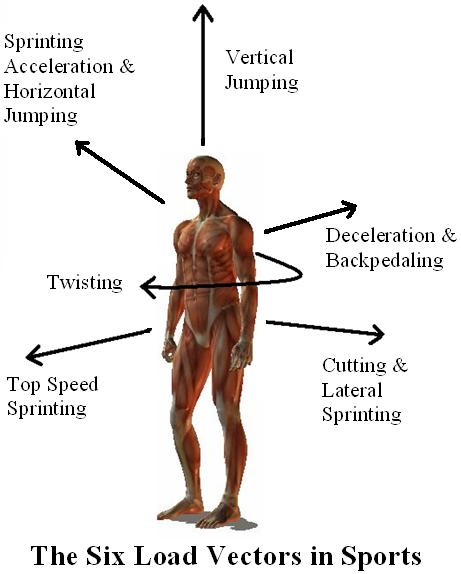

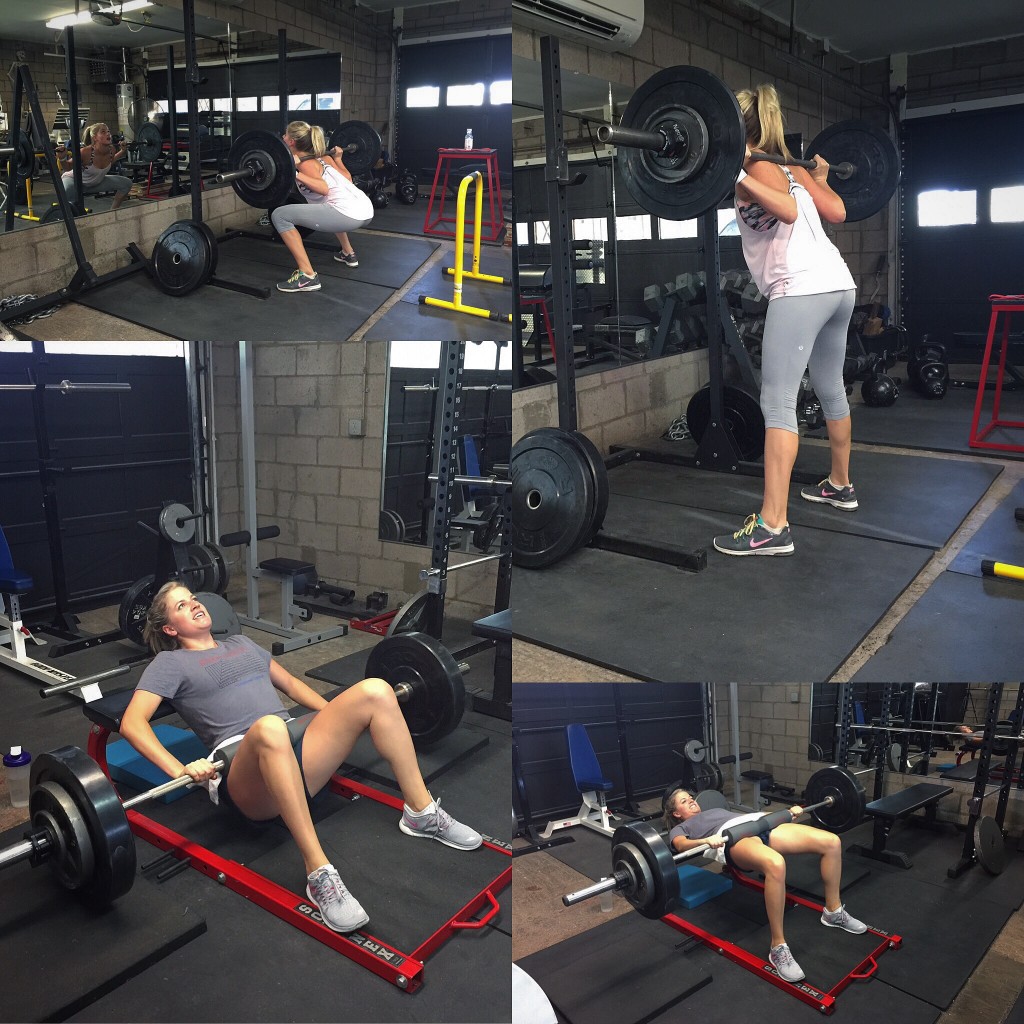
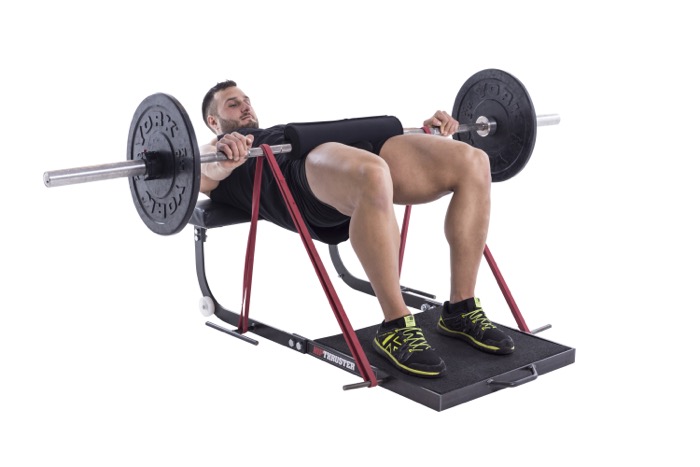
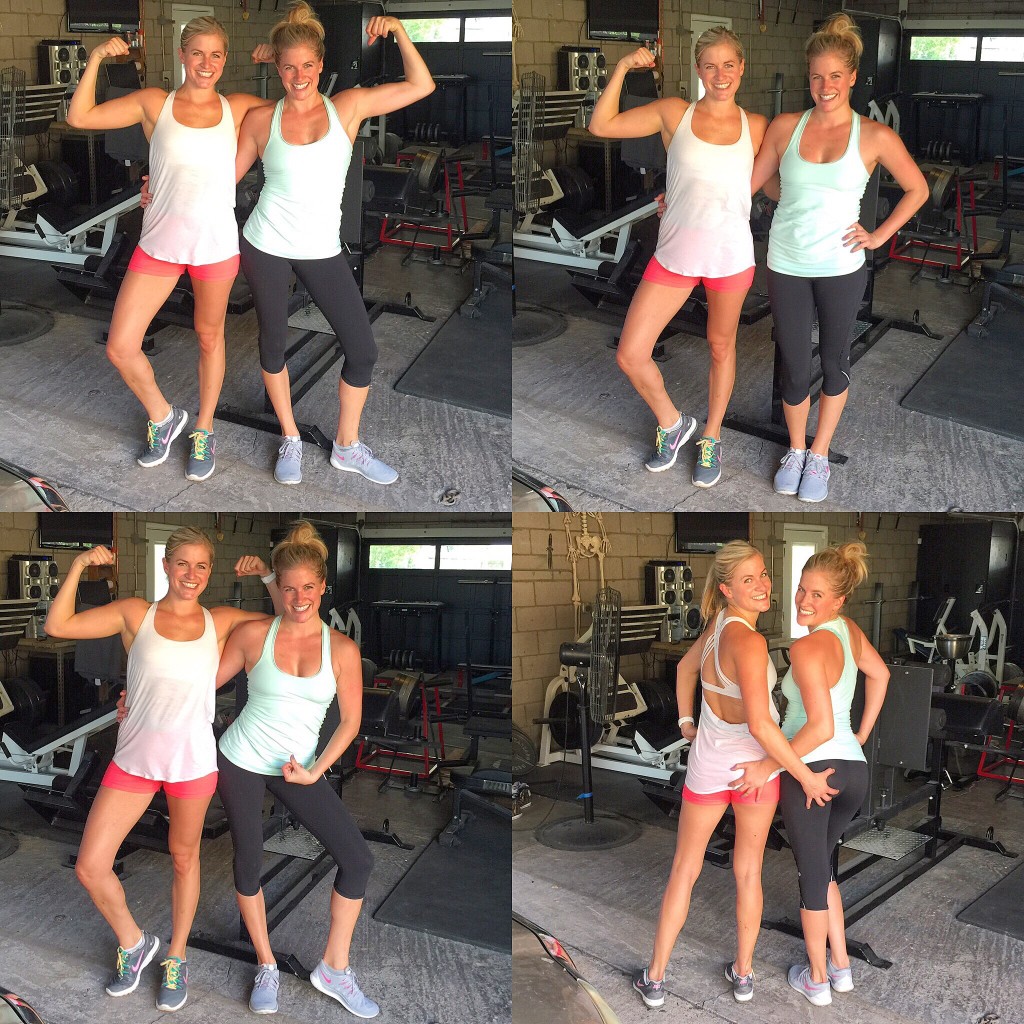





Thank you for taking the time to do this study and answer the questions many of us are too shy to ask. Most of us think to grow big strong glutes like a powerlifter we just need to squat only. Thanks for clearing up the misconception. Hip thrusts are finally getting the respect they deserve.
Thanks Dan. Yep, this is why I’ve always recommended variety…squats, deadlifts, hip thrusts, bb glute bridges, back extensions, lunges, lateral band work, etc. I appreciate the kind words.
Great interesting article would be interested to identify the further crossover within other aspects of training maybe a explosive jump or vertical jump seeing if it transfers so well across the board. Its certainly been something I’ve integrated into my clients training and the results are becoming very noticeable the cross over effect I must say I have not addressed but will start to.
Always a great read Charlie
Well stay tuned for part IV my friend, you’re in for a treat 🙂
Dear Bret,
Did your study measure hypertrophy in the Twins’ quads? If so, what were your findings ?
Thanks !
Bazhena
No I didn’t Bazhena, and I really wish I would have. It wouldn’t have taken much more time. But I had designed the study a while ago and at that time was only focused on glutes. I will get this data down the road.
great stuff as always! Quick question, how did you measure glute mass? Did you measure quad mass changes? Thanks!
Hey Mike!!! I used ultrasound to examine changes in muscle thickness. Didn’t look at quads, I should have. Hope you’re doing well.
Awesome, thanks Bret!
Hello,
Great write up.
We often say squat is the king of exercices because it’s a compound movement that build strength and muscles in many parts of the body. Can the same be said about the hip trust? Could it be that the squat is a better novice training tool and that the hip trust gain its place in the training regimen somewhere as the trainee get more experienced?
Thank you!
Guillaume, I think you’ll like part III as it’s pretty eye-opening. But yes, squats work more of the entire body, hip thrusts hone in more on the hips. But an ideal program should include both IMO.
Hi Bret. This is a great article. I have been following you for years now. I would love to see a before and after picture of their glutes if possible.
Maria, I actually took before/afters and I chose not to include them because you can’t see any differences whatsoever. However, the twins and I can see changes in real life. Their clothes are fitting very differently (the hip thrust twin can’t fit into her jeans anymore), but the pics don’t detect these changes.
Can you calculate your 1RM hip thrust from your 1RM back squat?
No Chris, you definitely can’t.
super interesting to read Bret!
Just one question: I didn’t get how do you measure up strength in your maximum horizontal push test?
Thanks!
Carol, you’re standing on a force plate, which measures forces in 3 directions (vertical, horizontal, and lateral). It’s a commonly used tool in sports science research. In this case I only look at horizontal forces, and since Newton’s laws state that for every force, there’s an equal and opposite force, the force plate measures the force an individual exerts into the wall. Hope that makes sense!
Hi Bret – great article. Im sure you’ve explained this in a previous article but i can’t find. What exactly does “75% of 1RM” “85% of 1RM” mean?
1RM stands for “one-repetition maximum,” or the most weight that an individual can lift with appropriate form.
Hi (soon-to-be-Dr.) Bret!
Regarding vertical vs. horizontal force, would you say that trying to flip a massive tractor tire requires horizontal force? I’ve read that trying to “squat it up” (or DL it up) is ineffective, and now you’ve got me thinking about whether hip thrusts would be an effective training tool for that type of feat…
I think that the hip thrust would transfer well to both the tire flip and the Atlas stone lift Jennifer.
Bret, very interesting work. I think you’ll like my Master’s Thesis project as it looks at many of the same things you are doing. I also compared a 6-week study of hip thrusts vs squats vs deadlift, and like you evaluated performance but more so in a performance tests (jumping performance, acceleration/sprinting speed, COD, and 3RM strength) rather than hypertrophy or isometric force (very cool idea on the horizontal force application). My population was also trained subjects, all with a strong athletic history (most college athletes).
Some similar and differing results than what you’ve presented so far, but I will be sure to forward or write-up the results for you to add into your hip thrust database. I defend the thesis later this month, so as with you, hopefully everything goes well and I can send it off the the JSCR.
Awesome Michael! I’m chomping at the bit. I did a training study as well, will be fascinating to compare. Good for you my friend.
Qucik question…If I had three times the experience doing squats vs hip thrusts (or vice versa) over the course of my life to date, wouldn’t that have an affect on my gains doing either/or over the course of a relatively short period of time like this?
Bret,
Can’t thank you enough for the hard work you put in to educate yourself and others as to optimal ways for gaining strength.
Thx,
Jeff
Hey bret,
Does improving horizontal force translates to a better acceleration and top speed in sprinters.
Thx.
I believe so, but it probably depends on the population. In the vast majority of people? Most probably. In elite sprinters? Maybe not. That may be more related to max velocity capabilities than force. Stay tuned for the training chapter to learn more.
Congratulations Bret! Keep up the great work!
You will make one heck of a Doctor for sure 🙂
Great article! While many of the commenters are working with power athletes, this type of strengthening is also important to the clients I serve, middle aged women. Many come to me with knee issues and are intimidated or limited in their ability to squat through a full ROM. Yet, they want to strengthen what I call their “get out of the chair” or “get up off the floor” muscles. Your work supports my using the hip thruster as a viable alternative to the squat. Thanks!
Just curious on what rest periods (ie between sets) did you use for the study??
2 minutes on the dot – I wore a stop-watch LOL.
I find it satisfying to know that the upper and lower glutes grew the same proportion for the hip thrust twin while for the lower glutes grew slightly more in proportion to the upper glutes for the squat twin.
I would like to have seen this study a) extended for a longer period of time to see if the proportion of lower to upper glute growth continued along this trend or decreased or increased over time. I would also have liked to have seen quad growth (size) for the hip thrust compared to squat measured for the twins.
I mostly train women, and have always felt stuck between the fireplace and the fire when training women who tend to be quad dominant yet tend to have lost the “A shape glutes” desirable in women. Squats of course are reputed to activate the glutius minimus and medius less than hip thrusts–and your research supports that–but when quad size in an issue, I have never considered squats to be the wisest choice for the glutes. I would love to see longitudinal evidence on whether or not the shape of the glutes produced by squats makes the risk of growing the quads worth it.
Which twin is who (in the picture at the top) ?
I love your research and what you do Bret. I can’t wait to read your publications. I would like to know HOW you measured glute “thickness.” Was is a circumference measurement, or did you get this measure by another method?
Sorry Bret correction to my question. I see now that you used ultrasound. Was your muscle thickness measurement simply muscle fiber diameter?
Hi Bret
Thanks for your interesting research. I have three question.1- Can I measure the glut hypertrophy by buttock circumference measurement? 2- I am wrestling coach, in my opinion, hip thrust and squat is effective in increasing strength and I think that because of motor pattern in wrestling, hip thrusts is more effective than squat in pushing opponent, but can hip thrusts and dead lift be more effective than hip thrusts and squat in wrestling? 3- You want to compare the squat and hip thrusts, Why have you used upper body exercises in research?
Hi Bret!!
I can testify for the crossover effect. I used to HATE squatting because my glutes and core were very weak and so i NEVER ever did squats, except for the sporadic bodyweight squats here and there. But after a month of Strong Curves and a month and a half of Get Glutes (going very heavy with HT), my squats have improved tremendously. I went from squatting 95lbs for 8 to now 135 lbs for 7; and it feels excellent ( a lot more stable and no more pain in my lower back! )
My boyfriend is definitely going crazy over the glute gains haha!!
#teamBootybyBret 😉
Bret – Do you think that the difference in outcome may be due to the squat’s larger degree of muscle damage versus the hip thrust’s larger degree of metabolic stress? If so, are there any other studies that compare something like a chest fly (damage) vs dumbbell press (metabolic stress) that may give insight?
I would like to hear you thoughts on using hip thrusts and glute bridges in training track athletes. I am a high school track coach. We are using these exercises twice a week as part of out in season training.
Hi Bret,
Great piece! Just got a quick question was wondering if you also measured the vertical force in the experiment and if there was an increase in the vertical force too, or was there possibly a decrease in the twin that performed the hip thrust movement – which could also show a better ability to now orientate force horizontally? Also with the horizontal force plate test was there a similar distribution in the force production for both legs tested – if the test was a single leg test?
Thanks
Ron
The part saying, ” squat is still highly effective at packing on glute mass. And interestingly, the squat still builds upper glute mass even though it doesn’t lead to high levels of activation” is an interesting discovery. I’m tempted to take a break from hip thrusts for a month and or even do the six week squat program from this article to see if I develop more muscle mass too.
I’ve been doing hip thrusts for maybe over a year now. I even did it nearly every day for a month about twice (on different occasions) following Chad Waterbury’s HFT method for target muscle training. I’m seeing better roundness in shape for my glutes, although, I’m still after building more size.
Trial and error it is?
Hello everyone. I’ve made a XLSX Excel spreadsheet of the hip thrust program. You just type two inputs (1RM and weekly increase) and then it calculates the weights for the rest of the program for every set. After you complete a session (or set, if you’re using your laptop/phone in the gym), you type the reps performed and the weight used. The idea is to hit the numbers that are in parenthesis.
Also, this program only includes the hip thrust training; it isn’t the full body workout like above, so I’ll assume if you perform this program you’re already doing some type of training for the rest of the body.
When you open the document, you’ll see it says “Hip thrust 1RM”. Now, if you’re a beginner, attempting a 1RM is actually dangerous, so I’d suggest you use a 1RM calculator like the one from http://www.exrx.net/Calculators/OneRepMax.html
Of course, you may not get the same results as the hip-thrust twin: we all are different, we don’t know what tempo scheme the twin followed for the reps, and we don’t know much weight Bret increased her hip thrust every week.
The XLSX program: https://www.dropbox.com/s/egt8yco9pidyfak/%28DO%20NOT%20EDIT%2C%20TEMPLATE%20ONLY%29%20Bret%20Contreras%27%20Twin%20Experiment%20Hip%20Thrust-Only%20Program.xlsx?dl=0